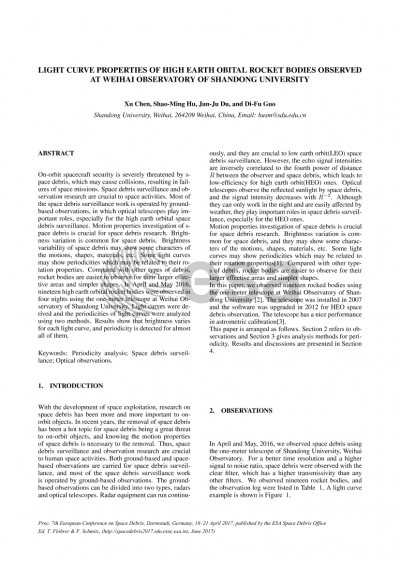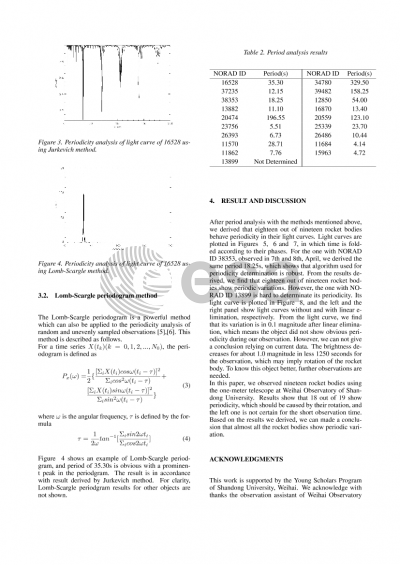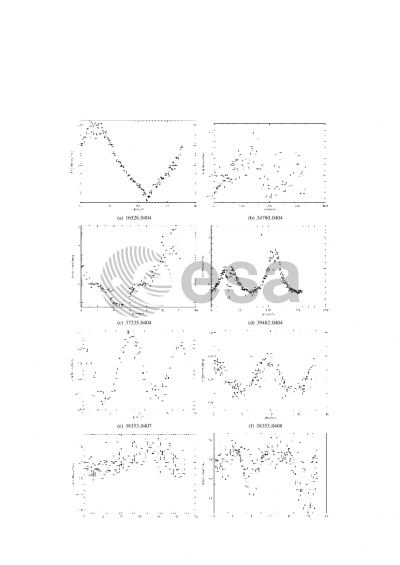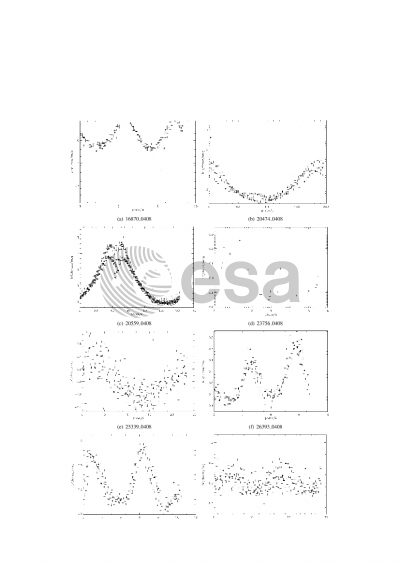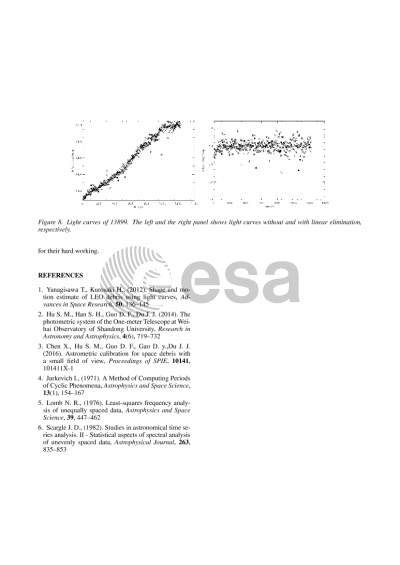Document details

Abstract
On-orbit spacecraft security is severely threatened by space debris, which may cause collisions, resulting in failures of space missions. Space debris surveillance and observation research are crucial to space activities. Most of the space debris surveillance work is operated by ground-based observations, in which optical telescopes play important roles, especially for the high earth orbital space debris surveillance. Motion properties investigation of space debris is crucial for space debris research. Brightness variation is common for space debris. Brightness variability of space debris may show some characters of their motions, shapes, materials, etc. Some light curves may show periodicities which may be related to their rotation properties. Compared with other types of debris, rocket bodies are easier to observe for their larger effective areas and simpler shapes. In April and May 2016, twenty high earth orbital rocket bodies were observed in four nights using the one-meter telescope at Weihai Observatory of Shandong University. Light curves were derived and the periodicities of light curves were analyzed using two methods. Results show that brightness varies for each light curve, and periodicity is detected for almost all of them.
Preview
